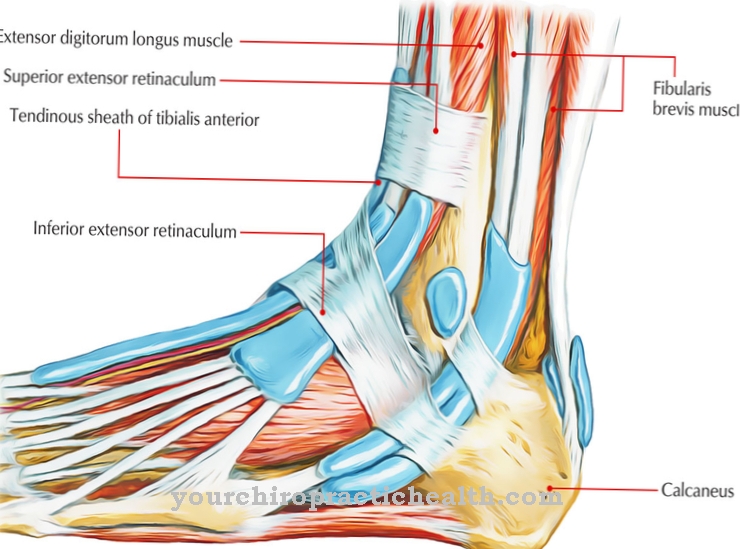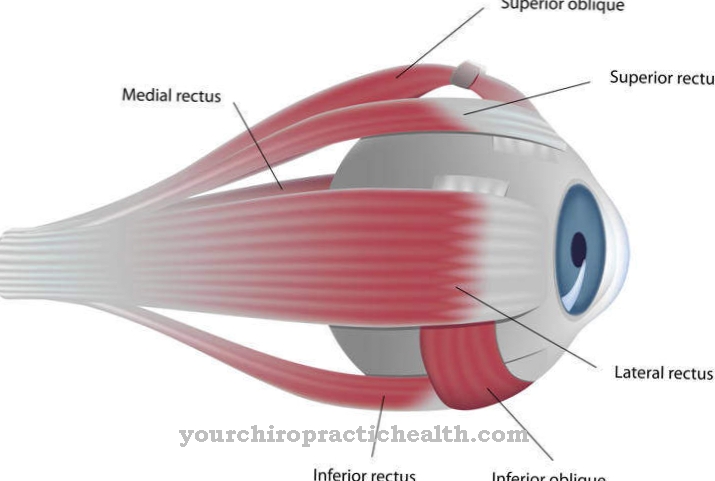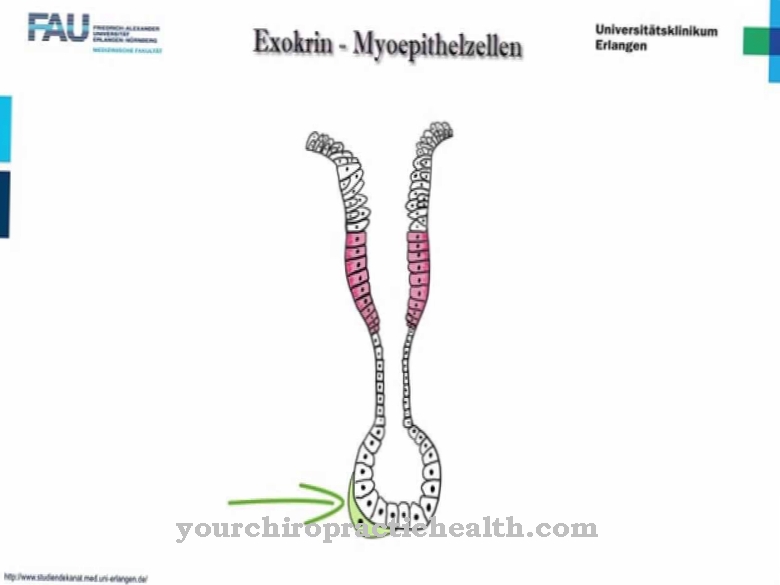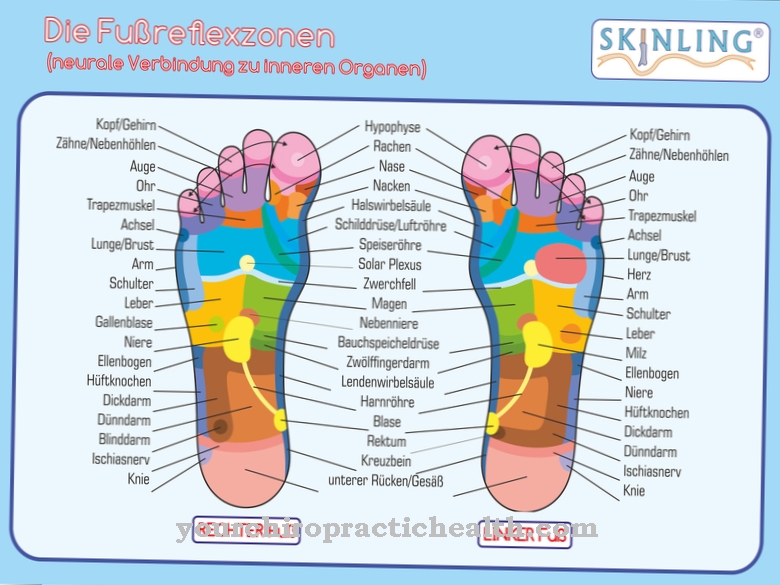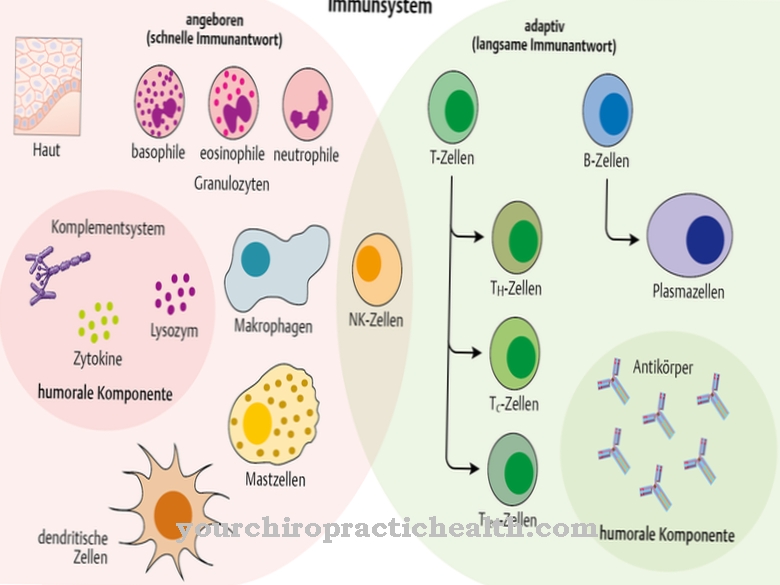The Organ of Corti is located in the inner ear in the cochlea and consists of supporting cells and sensory cells that are responsible for hearing. When a sound wave stimulates the hair cells, they trigger an electrical signal in the downstream neuron that reaches the brain via the auditory nerve. The diseases that can affect the organ of Corti include Menière's disease or hydrops cochleae, age-related hearing loss (presbycusis) and others.
What is the organ of Corti?
The organ of Corti is part of the human sense of hearing. The complex of supporting and sensory cells is located in the inner ear, which lies behind the oval and round window. Before the sound reaches the oval window, it traverses the external auditory canal, the eardrum and the middle ear behind it.
The latter consists of the tympanic cavity, which contains the ossicles. When a sound wave reaches the eardrum, it transmits the vibration to the ossicles, which in turn hit each other in a chain reaction and finally set the membrane of the oval window vibrating. The snail begins behind the oval window. It winds in the inner ear and runs lengthways through three passages that run parallel to each other and are filled with lymph. First, the sound reaches the atrial duct, which leads to the tip of the snail and seamlessly merges into the tympanic duct, which leads back to the round window.
The cochlea, in which the organ of Corti is located, lies between the two. It lies over the basilar membrane that forms the floor of the duct and under a cover membrane also known as the tectorial membrane. The structural and functional unit owes its name to the Italian anatomist Alfonso Corti, who was the first to describe it in 1851. The technical language also knows it as Organon spiral cochleae.
Anatomy & structure
Along the course of the cochlea are three rows of outer hair cells. Hair-like appendages protrude from the cell body (soma), which protrude into the cochlea and are called stereovilli. A single hair cell can have 30–150 stereovilli. In addition, they have a special extension, the kinozilia, of which each cell has at most one.
All processes of the outer hair cells protrude into the cochlea and there meet the tectorial membrane; Deflections of the membrane are transmitted to the sensory cells and bend the stereovilli and kinocilia. The stereovilli are in contact with each other via tip connections (tip left); The flexible connections are also important for opening pores at the tip of the stereovilli. In addition to the three rows of outer hair cells, a single row of inner hair cells runs through the cochlea.
The inner hair cells have the same structure as the outer ones, but do not touch the tectorial membrane. The hair cells of the human ear are secondary sensory cells that do not have their own nerve fibers.When stimulated, they first transmit their signal to another cell (ganglion spirale cochleae), which transports the information via their nerve fibers. Taken together, these fibers form the auditory nerve. Support cells stabilize the actual sensory cells of the organ of Corti.
Function & tasks
The organ of Corti converts the stimulation of the hearing into a nerve signal by means of sound waves; Physiology calls this process transduction. The sound spreads in waves over the lymph of the atrial canal. The Reissner membrane between the atrial and cochlear ducts hits the tectorial membrane, which in turn transmits the movement to the stereovilli of the outer hair cells of the organ of Corti. In this way the tectorial membrane deflects the stereovilli either in the direction of the kinozilia or away from it.
In the resting state, the hair sensory cell produces a so-called resting potential: spontaneous activity that leads to the release of the neurotransmitter glutamate. The amount delivered is constant. A deflection of the stereovilli towards the kinozilia signals to the cell an auditory stimulus. The tip on the left widen the pores of the stereovilli and thereby allow potassium ions to get inside the cell and to change their electrical charge. As a result, the hair sensory cell releases more glutamate and thereby irritates the subsequent nerve cell.
If, however, the stereovilli do not deflect towards the kinozilia, but away from it, they narrow the pores and fewer potassium ions can penetrate the hair cells. Accordingly, the cell releases less glutamate and thereby actively inhibits the downstream nerve cell. The perception of the sense of rotation in the semicircular canals, which also belong to the inner ear, works in the same way. The stimulus is not generated by a sound wave, but by the turning movement of the head.
You can find your medication here
➔ Medicines for earache and inflammationDiseases
Numerous diseases can manifest themselves in the organ of Corti; They include Menière's disease (hydrops cochleae), old age hearing loss (presbycusis) and others. Menière's disease or hydrops cochleae is a disease in which the inner ear produces too much lymph.
Typical symptoms include dizziness, hearing loss, tinnitus, and a feeling of pressure in the ears. Often the excess lymph stretches the passages in the cochlea and is the first thing that makes it difficult to perceive deep sounds. The additional pressure on the hair cells can deflect the stereovilli even though there is no acoustic stimulus. Even with temporary hydrops cochleae, permanent damage to the organ of Corti is possible, which leads to the persistence of some or all of the symptoms.
Age-related hearing loss (presbycusis) usually manifests itself from the age of 50 and manifests itself in hearing loss up to loss of hearing as well as tinnitus. In addition to natural aging, other factors such as circulatory disorders, diabetes mellitus and increased blood pressure can contribute to the development and severity of old age hearing loss.

